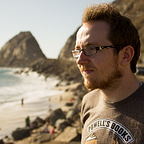Photo Flashback: Raising The Flag on Iwo Jima
71 Years Ago This Week
In ‘Photo Flashback’ I’ll be looking back at a different historical photo each week and its significance in the modern world.
First up is Raising the Flag on Iwo Jima, taken by Joe Rosenthal on February 23, 1945. The photograph depicts five United States Marines and a United States Navy hospital corpsman raising a U.S. flag atop Mount Suribachi during the Battle of Iwo Jima, a pivotal battle of the Pacific Campaign of World War II.
Rosenthal had arrived on the island just four days before, under heavy fire from the occupying Japanese forces. Iwo Jima would later go on to be one of the bloodiest battles of the Second World War, accounting for one third of Marine deaths during World War II.
The island was heavily defended by the Japanese as a matter of honour, because it would be the first Japanese homeland soil to be captured by the Americans.
After fours days of intense fighting, U.S. Marines captured Mount Suribachi, a volcanic peak on the southern tip of the island. Marines erected a small American flag to commemorate the victory. There is a lesser-known photograph of this flag, but Rosenthal’s famous image came during the second flag-raising of the day.
As fighting continued across the island, a team of four Marines was sent up the mountain to raise the second, larger flag. While Rosenthal was ascending Mount Suribachi he met another photographer on his way down, who told Rosenthal that the summit offered a great vantage point for photographers.
Rosenthal reached the summit as the Marines were preparing to raise the flag, attaching it to a Japanese water pipe. Rosenthal put his Graflex Speed Graphic camera down to pile rocks to stand on, so he could get a better angle on the scene. The camera was set to 1/400 with the f-stop between 8 and 16. He recalled later in interviews that he almost missed the shot while he was piling the rocks. The five Marines and Navy Pharmacist Mate Second Class John Bradley began to raise the flag. Rosenthal noticed the movement and quickly grabbed his camera, swinging it up and snapping the picture without looking through the viewfinder. Ten years after the flag-raising, Rosenthal wrote:
Out of the corner of my eye, I had seen the men start the flag up. I swung my camera and shot the scene. That is how the picture was taken, and when you take a picture like that, you don’t come away saying you got a great shot. You don’t know.
Of the six flag-raisers in the picture — Ira Hayes, Franklin Sousley, Michael Strank, Rene Gagnon, John Bradley, and Harlon Block — only Hayes, Gagnon, and Bradley survived the battle. The island would not be declared “secure” until 31 days later, on March 26th.
The photograph would go on to be one of the most famous shots taken during the war, although it would garner some controversy along the way. Rosenthal was asked at one point if the picture had been posed. Thinking he was being asked about another image, he said yes. Rosenthal later clarified his response, but the rumour would persist alongside the photo for years.
The image was wired around the world and appeared on countless front pages in the days after it was taken. President Roosevelt later selected the photo as the principal image for the seventh war bond drive, and 3.5 million posters featuring Rosenthal’s work were sent around the United States.
Raising the Flag on Iwo Jima would go on to be awarded the Pulitzer Prize for photography in 1945, used on a United States stamp and eventually recreated in a war memorial in Arlington, Virginia, becoming the most reproduced photograph in history and an iconic image of World War II.
This is an edited version of an article that first appeared on Bokeh.
